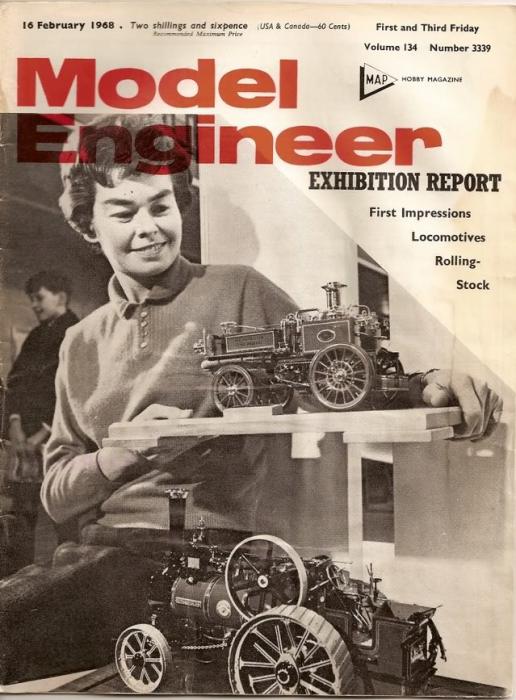by Geoff Theasby

In the field of model engineering, women remain under-represented, so the long and successful career of top modeller Cherry Hill, who has won many awards and accolades for her work, deserves to be highlighted. Especially because, despite her reputation within the model engineering community, Cherry Hill is almost unknown outside the community.
Over the course of her career, Cherry Hill has produced a number of intricate scale models, has won nine gold medals at the Model Engineering Exhibitions, and has been awarded the top prize – the Duke of Edinburgh’s Award – also nine times. Of late, her models have been of the more obscure traction machinery, even in one case, an engine that was never built, indeed, as a contemporary drawing shows, could not work as intended.
Several years are spent on preparation, research and drawing plans, followed by further years making the model, to the extent of machining her own miniature nuts and bolts.
A well illustrated book by David Carpenter, (Robert Hale, 2014) details her life in model making, from growing up in Malvern, Worcs, the child of an agricultural engineer. Beginning with a Sunderland flying boat during WWII, which won a 2nd prize, conventional traction engines featured in her early work, followed later by more original examples.
Whilst at University, Cherry built a ‘special’ car based on a much modified 1926 Humber 8 hp chassis. Registered in 1952, it was soon replaced by an MG TA. Trying to patent a design for electric scissors, she found that a Frenchman had pre-empted her in 1918.
Cherry was more successful with a carburettor balancer, marketed as the Crypton Synchro-check for eight years in the 1950s, and still in demand by enthusiasts.
In 1953, a visit was paid to a model engineering component retailer for some small items, but a set of Stuart Turner No 9 castings accompanied her home, with the results we now know. The finished model later won a Bronze Medal at the 1964 Exhibition and was given to the Society of Model & Experimental Engineers’ HQ, in London, where it can still be seen. This was followed by an Allchin Royal Chester traction engine, at 1:16 scale. There are plenty to compare it with, as it is the most popular traction engine model ever made.
In her research, Cherry discovered the original full size machine near Tonbridge, and spent the next seven years in manufacture, winning a silver medal at the same exhibition. Two years later it was runner up in the Duke of Edinburgh’s Award competition. In 1978, the more unusual types began to appear, beginning with Taylor’s Steam Elephant, patented in 1860. Construction revealed that the design had several shortcomings, nevertheless, it worked on compressed air, winning a gold medal in 1984.
Perhaps the most unusual model is the Blackburn agricultural engine of 1857. It is doubtful if it would have worked as designed, where the engine and boiler were inside a large drum acting as a road wheel, driving it via a ring gear around the inside. How the exhaust was directed past the spokes of this wheel is not explained, and Cherry had to speculate on a solution, designing a working system. This model won a Gold Medal in 2005 and the D of E Award in 2007. We must not forget that in 1857, traction engines were in their infancy, and many ideas both practical and impractical appeared before the overall general design with which we are all familiar emerged.
Research for a new model begins with browsing the pages of Victorian magazines, like The Engineer, founded in 1856, and the Patent Office archives, selecting the more unusual examples. Thousands of hours are then spent drawing and planning before the engineering work proper begins.
Cherry first came to the attention of Model Engineer magazine in 1968, appearing on the front cover with two of her models, a traction engine and a 1905 self-propelled fire engine. One reader saw the picture and vowed to marry her and did.
Cherry Hill was made MBE in 2000 for services to model engineering, has twice won the Sir Henry Royce Trophy for the Pursuit of Excellence, and in 2004, elected a Companion of the Institution of Mechanical Engineers, and an Honorary member of the Society of Model & Experimental Engineers.
About the author
Geoff Theasby is a writer specialising in technical subjects and a radio amateur. He writes a regular “Club News” column for Model Engineer magazine, and has frequently contributed to other publications, including Practical Wireless and the Radio Society of Great Britain’s magazine, Radcom. He also has a workshop where he makes small models and electronic devices and tries out various design ideas.